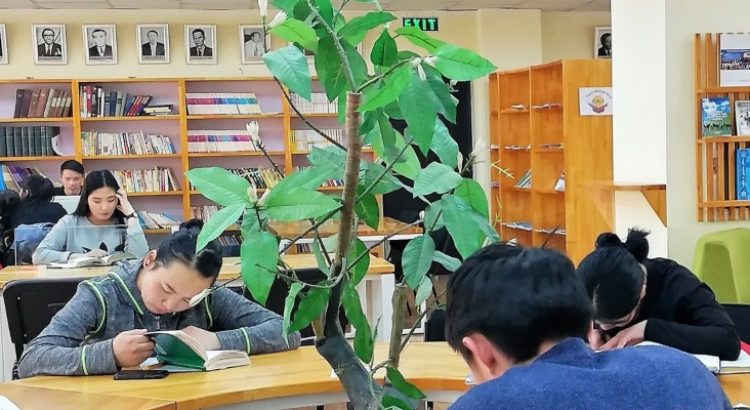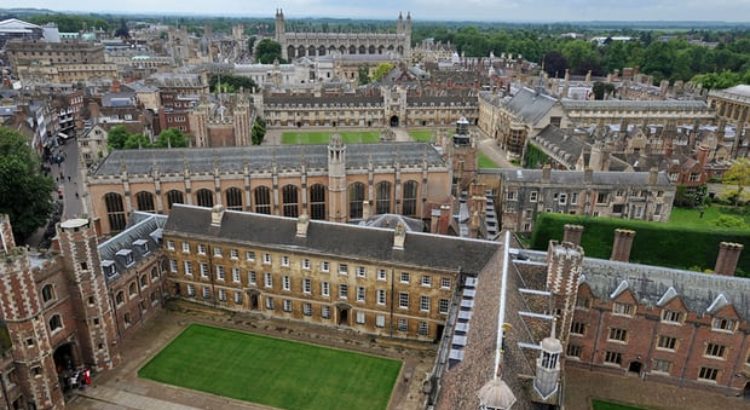By: EMMELINE ZHAO
Deborah Quazzo got her start in education at an investment bank.
In the mid-1990s, while Quazzo was working in finance at Merrill Lynch & Co., she was inspired by colleague Michael Moe, who was a growth research analyst identifying trends and themes in the growth economy. Moe developed white papers and built businesses around one of the core themes: education.
What Moe discovered was that human capital, a major chunk of American GDP, was highly fragmented and inefficient, yet untouched by technology at the time. Employers and economists were deeply dissatisfied with outcomes across the board. In working together, Moe and Quazzo realized that there was huge potential for entrepreneurs to enter the space and create businesses in education that built human capital.
With that, Quazzo began looking at the future of education as an investing platform, from which she and Moe eventually grew to become business partners upon leaving Merrill Lynch. As Moe continued to explore abroad growth themes, Quazzo was diving deeper into education domestically.
In 2009, Quazzo co-founded GSV Advisors, an advisory firm focused on learning and human capital technology companies. She now acts as founder and managing partner of GSV Acceleration Fund, a venture capital fund with more than 25 investments in disruptive technology companies, including ClassDojo, Course Hero, and Turnitin.
GSV, which stands for Global Silicon Valley, partnered in 2010 with Arizona State University for the first ASU+GSV summit. Now in its eighth year, the gathering brings together leaders from investment, enterprise, higher education, and pre-K–12 sectors “for elevating dialogue and driving actionaround raising learning and career outcomes through scaled innovation.”
Ahead of the summit next week, during which more than 4,000 stakeholders and change makers in education innovation will descend on San Diego for the conference, The 74 spoke with Quazzo about the inspiration behind ASU+GSV, the role of technology and investment in learning, and the state of innovation across the American education sector. This interview has been edited for length and clarity.
What happened in 2008 that made you decide to dedicate 100 percent of your time to investing in education technology?
I realized that I had become quite passionate both philanthropically as well as professionally around the fact that innovation in the education market is a unique lever in giving people access. Our motto is getting all people access to the future and allowing all people to participate in the future economy. So it was an area that I was inspired by and made me get out of bed in the morning, so I really hunkered down and began to spend 100 percent of my time there, which has been great.
How has your perspective on education evolved since the time when you were just reading Moe’s reports at Merrill Lynch?
I don’t know if it’s change as much as just what I didn’t know when I started.
We have invested thousands of hours, meeting with companies, talking to entrepreneurs and innovators, both philanthropically as well as socially. We spent time in schools with educators both in the K-12 space as well as the higher ed space. The enterprise is as interesting as anything.
I think there is great dysfunction in terms of delivering the right learning at the right time and the enterprise, especially with the pace at which jobs are changing today. So I’m a lot more optimistic today than I was probably when I got into this 20 years ago.
I think 20 years ago, the education sector really lagged every other technology sector in terms of adoption of technology-based solutions. That’s not to say that technology is a silver bullet, but it can certainly give critical scale in an area where we really need scale to help us bridge achievement gaps and bridge the fact that only 30 percent of people have a higher education credential and probably more like 60 to 80 percent of people are going to need them in the future. So we think it’s a critical wedge.
I think what’s really changed is that somewhere around 2008, 2009, 2010, we began to see a new a new breed of leader and entrepreneur come into the sector — both social and commercial. People who had either been very successful in technology or in other sectors and actually wanted to come make a big difference began to bring their talents into the marketplace.
The population of students and teachers also over time became dominated by digital natives in a way that obviously wasn’t true in prior years. In programs like Teach for America young people out of college will go into the teaching profession and become inspired about fixing one thing or another in their classroom experience, and go back out and found companies. We’ve seen lots of that from different sources.
So I think there has been sea change. I think the other thing that’s happened is just where we are in the tech sector in terms of having data and being able to transparently look at results: It allows students, teachers, faculty members, and adult learners to know whether the things they are using are actually working. That was something that hadn’t really been true in the past.
It’s what we like to call “a confluence of catalysts.” There was dramatic reduction in costs for technology implementation, the huge influx of talent into the sector, and just the natural migration of demographics such that the user had a natural digital proclivity.
Do you think we’ve seen a true disruption in K-12 and higher ed?
I do. The K-12 market gets kicked around a lot as being a market environment that never changes, but I actually think some of the greatest innovations are happening in K-12 and has happened around personalized learning, around looking at different ways of delivering instruction, led by great school leaders and teachers. So maybe I don’t know it’s been disruptive as much as it has been a strong evolution towards more effective delivery of learning in classrooms, and I think you can see results in different pockets all over the country.
Chicago is a good example of where people have really looked to leverage all kinds of that innovation and thinking to drive outcomes for students.
I’d say higher ed has seen more literal disruption, whether it’s MOOCs, which people love to act like they aren’t working, but they’ve aggregated just a massive number of global students. Students at Coursera, for example, are actually accelerating on a month-to-month basis coming onto the platform.
We’re seeing all kinds of interesting businesses being developed for the delivery of online degrees at universities in a non-university setting. So I think there actually has been a really interesting disruption in higher education institutions, whereas 10 years ago you had to sell an online learning product. Today I think it’s pretty well recognized that digital delivery of learning in some format is a sensible part of your portfolio. Students are really expecting to see some component of their learning in online formats, so I think there has been a literal disruption in the higher ed market that’s continuing. And it will continue to play out, as we’ve actually got some pretty interesting demographic changes coming down the pike to higher ed.
Tell us more about these demographic changes.
There’s a book written by Nathan Grawe called Demographics and the Demand for Higher Education. There was a dramatic fall-off in fertility rates during 2008–2010, a depression that really has not bounced back. So if you look out to the 2025 area, you begin to see very substantial reductions in high school population that would be going to college: 10 to 15 percent, even higher percentages, depending on geography. And you also end up seeing a re-sorting of where the growth is.
The Northeast and the Midwest will see the most precipitous declines. The Southwest is the only area that’s seeing any material growth in college-eligible high school population, so it’s a pretty interesting dynamic for a university to be planning for that, that has been landlocked by their site.
So if you’re a mid-tier university in the Northeast, you probably need to be thinking about where you’re going to be pulling your student body from, whether it should be all physical or whether you need to actually have it be digital or online in order to support your physical plan.
What’s your analysis of the education policy landscape right now in terms of innovation?
My general sense is that the wheels are in motion. No one wants to talk about Common Core anymore, but those wheels did get set in motion and did get planted in different ways — maybe people changed the titles. But accountability at the district level, we certainly see it here in Chicago, there’s a very effective accountability framework.
I think a lot of the things that have been put in place are moving forward. I think whether there’s policy changes in higher ed that result in freedom for for-profit institutions is sort of a moot point at this point, as many of them have now converted into different formats of not-for-profit and for-profit pieces, so that industry has really already restructured ahead of any further policy change unless new entities jump in as a result, which seems less likely.
So I don’t get the sense that policy is either being used to aggressively accelerate things — which I would say would have been true under the Obama administration — or to decelerate things — which could also be argued to be true under the Obama administration, depending on what sector you’re talking about — but it was an activist policy environment then and perhaps it’s activist in a different way now with the folks on choice and things like that. But I just don’t see that as having as much of an impact, barring some big changes today.
Have you encountered challenges and/or opportunities because you are a woman?
Challenges change. I do think we’re particularly proud within the education and human capital talent in the technology sector. At our ASU+GSV Summit, we don’t select with this in mind, but we have about 400 CEOs of tech companies present the summit and about a third of those companies are founded or led by women. This year actually the numbers went up to about 38 percent of the companies are founded or led by women.
On the positive side, I would say this: The education and human capital sector, for whatever reason, seems to be one that’s much more supportive for women to participate in leadership roles, because a normal tech sector is more like 6 percent.
I have a venture capital fund, and certainly those numbers are still pretty bad in venture capital. We need to have much more aggressive tone in looking at the benefit of having diversity in terms of sex, race, investment communities, and everything else. Diversity leads to better decisions.
About a quarter of our companies are led by people of color, so we’re very proud of those numbers. But in the finance community we don’t see that kind of diversity, so it has a long way to go and we have a lot of work to do.
What are too few people paying attention to right now in education?
It’s a great sector to work in because you have so many people who really care about it. I’m quite optimistic about where things are directionally. I think people do need to keep looking down the road at things like the demographic changes, which are mathematical and should have been obvious to everybody, but I think it’s kind of taken this guy writing a book to really move it front and center.
The bizarre part is we have declining enrollment in higher education and yet we’ve got an expanding need for people to have a higher ed credential of some sort in order to be relevant in the economy and have a good job.
So I think there is a strange dichotomy there that doesn’t seem to get a lot of focus for explanation, like why would we have declining enrollments in the face of people actually needing to have higher levels of skills to hold employment?
Otherwise I feel really fortunate to be operating an area where there are lots of people who really care a lot about the outcomes here, because they know it’s going to make a huge difference in how this country performs in the next 100 years — or doesn’t.
How do you think the private and public sectors should co-exist in education?
We have a concept called “no labels.” We think it’s relatively irrelevant what your tax structure is — whether you’re for-profit, not-for-profit. Organizations have to be held accountable for delivery of “return on education.” Are you increasing access, reducing costs, providing leverage to learning, and that accountability should really be there for any actor in the market. For-profits and higher ed should not be held more accountable than not-for-profits, because there are many bad actors in the not-for-profit sector, as there might have been in the for-profit sector. So I think it’s bizarre to have accountability standards that are different.
Every organization should have similar accountability standards. I think sometimes what you’ll see in for-profit entities is that you can instill greater urgency with potentially less bureaucratic overload, and I think things can get done in startups that can’t get done at bigger companies, either for-profit or not-for-profit, that can be very productive and disruptive to what’s happening. So I think it’s critical that there’s a partnership between the commercial and social organizations in the sector, and that they’re both marching forward and are both held highly accountable for outcomes.
See the full 74 Interview archive right here; get the latest editions delivered straight to your inbox by signing up for The 74 Newsletter
Source:
74 Interview: Deborah Quazzo on the Business of Education Innovation, the Nation’s Shrinking Skilled Workforce & the GSV Acceleration Fund












 Users Today : 104
Users Today : 104 Total Users : 35459699
Total Users : 35459699 Views Today : 188
Views Today : 188 Total views : 3418160
Total views : 3418160